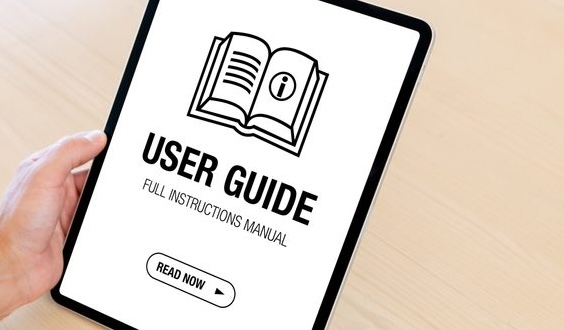In recent years, there has been frequent discussion about the possibility of replacing traditional paper instructions for medical devices with electronic versions. There are many reasons for this proposal: digital formats offer a reduced environmental impact, are less expensive to produce, and can be easily updated in real time.
However, as with any innovation, there are also critical issues to consider. The main disadvantages concern usability, which can be complicated by navigation difficulties (for example, when viewing multiple pages simultaneously or comparing different sections), and technology-related risks, such as computer system failures or vulnerability to cyber attacks.

Healthcare Professionals' Preferences
Despite these potential disadvantages, doctors and healthcare professionals appear to favor the adoption of electronic instructions for use. According to a survey commissioned by the European Commission, conducted between August 1 and October 10, 2024, a clear preference for electronic versions over paper versions emerged. The results suggest that digitizing instructions for use can simplify the work of healthcare professionals, allowing faster and more dynamic access to the necessary information.
The European Commission's Proposal
In the context of these reflections, the European Commission has decided to update the rules on electronic instructions for medical devices. Specifically, it has presented a proposal to amend Implementing Regulation (EU) 2021/2226. Previously, Article 3 of this Regulation stipulated that only certain types of medical devices (such as implantable devices or active implantable devices) could be supplied with electronic instructions for use. With this amendment, the Commission has established that all medical devices may be supplied with electronic instructions for use, provided they are intended for professional use. This means that it will be up to the manufacturer to decide whether to offer the instructions in electronic or paper format, depending on what they deem most appropriate for professional users.
Exceptions: Patient Instructions Must Remain in Paper Format
One of the fundamental conditions established by the Commission concerns medical devices intended for use by patients. In these cases, the instructions for use must always be provided in paper format if intended for the patient, especially for implantable devices. Nevertheless, the electronic instructions must still be accessible via a permanently valid URL link, which must be registered in the UDI database (Article 7 of the proposal). Furthermore, for "legacy" devices (already on the market before the new regulation came into force), the previous rules will continue to apply until the end of the transitional period.
What Manufacturers Must Do
If a manufacturer decides to provide electronic instructions, they must comply with a series of strict conditions, as set out in Article 5 of the proposal.
These conditions include:
-
Risk Assessment: The manufacturer must conduct a risk assessment to ensure that the electronic format does not compromise security compared to the paper format. The assessment must consider several factors, including user experience, the usage environment, the security systems adopted, and potential issues arising from an interruption in the internet connection.
myHealthbox can support you in integrating with your quality system and carrying out risk assessments by providing a pre-validated GMP solution with related documentation.
-
Availability of instructions: The instructions for use must be available on an official manufacturer's website, in the official language of the country where the device is distributed. This means that the manufacturer must ensure easy and direct access to the instructions via a website.
myHealthbox provides a secure platform for the distribution of digital information sheets and eIFUs in over 200 countries.
-
Update notifications: A system must be implemented to notify users of any changes or updates to the instructions. This may require users to register on the website to receive notifications, with particular attention to personal data management (GDPR).
myHealthbox provides a solution for managing notifications; myHealthbox users can register to receive an email notification when an updated version of a document becomes available.
-
Archive of previous versions: The website must also host previous versions of the instructions, ensuring transparency and access to historical information.
myHealthbox provides easy and secure access to both the most recent and all previous versions.
-
Clear indication on the label: Finally, the device label must clearly specify that the instructions are available in electronic format and indicate how to access them.
myHealthbox offers several ways to access digital documents: dedicated URL, text search, barcode search, and programmatic access via API
Conclusions
The European Commission's proposal marks an important step toward the digitalization of instructions for use for medical devices. While the transition to electronic format offers numerous advantages, it is essential that manufacturers comply with the new conditions to ensure the security and ease of access to information. However, the obligation to provide paper instructions remains in place when the final recipient is the patient, especially for implantable devices. The adoption of these new regulations aims to make the healthcare sector more efficient, sustainable, and safe.
For any questions or to discuss your requirements, please write to us at: sales@myhealthbox.eu